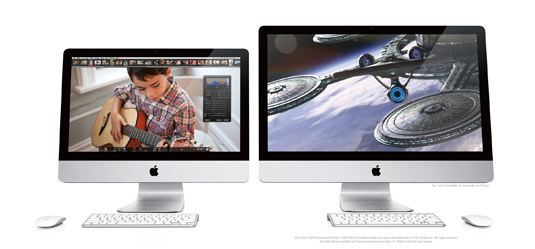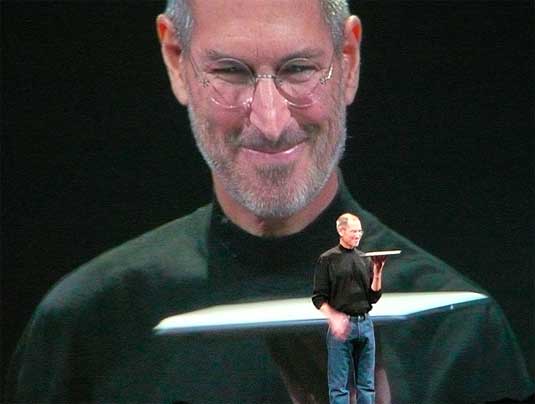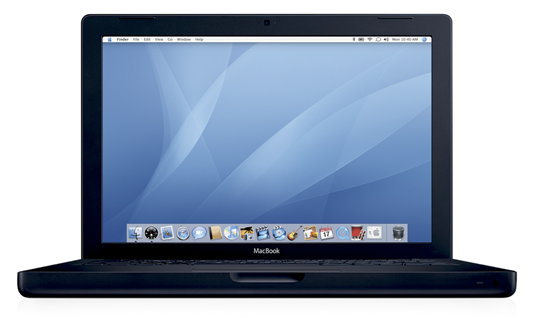As expected, Apple has rounded out its computer line with a bunch of new models which follow the traditional Apple pattern: They have better specs, upscale features, and the same prices as the models they replace–and they’re missing some rumored features, too. (Blu-Ray in this case, which is apparently still a bag of hurt.)
The new entry-level MacBook is mostly much what you might guess it would be: A white-plastic model that brings a bunch of features from Apple’s higher-end models, including an LED backlit screen, a multi-touch touchpad with a built-in button, and a Mini DisplayPort connector. It loses the FireWire connector–oh no, not again!–but, strangely, doesn’t seem to gain an SD slot. It’s also got Apple’s sealed “unibody” design (in a curvier-looking form than the old MacBook case) with a built-in battery which Apple says is good for up to seven hours. And it’s 4.7 pounds, down from 5 pounds for its predecessor.
The MacBook didn’t get a price cut: It still starts at $999, which gets you a 2.26GB Core 2 Duo CPU, Nvidia GeForce 9400M graphics, 2GB of RAM, and a 250GB hard drive. The mythical $899 Mac portable remains mythical for now.

The iMac line also got an upgrade, with new 21.5″ and 27″ models (starting at $1199 and $1699), both of which have 16-by-9 widescreen displays with LED lighting, SD slots, and the ability to connect external video sources such as a game console or Blu-Ray player via an adapter. (Some models of HP’s latest TouchSmart have a similar feature.) Processors now go up to a quad-core Intel Core i7.
The new iMacs come with a new wireless mouse called the Magic Mouse (sorry, Little Roquefort) with a multi-touch surface that lets you perform iPhone-like gestures such as swiping and pinching. It’s also available separately for $69.

Apple also beefed up the specs on the Mac Mini, and introduced an intriguing server version with Snow Leopard Server preinstalled, two hard drives, and no optical drive. It’s not a home server like HP’s MediaSmart, but maybe Apple is tippy-toeing in that direction.





 AppleInsider is reporting that
AppleInsider is reporting that  Of all the news that came out of Monday’s Apple WWDC keynote, one tidbit that didn’t get much attention is worthy of note: Apple’s refresh of its 13-inch laptop brought back the FireWire port that
Of all the news that came out of Monday’s Apple WWDC keynote, one tidbit that didn’t get much attention is worthy of note: Apple’s refresh of its 13-inch laptop brought back the FireWire port that  Ready to partake in news?
Ready to partake in news? Quick, you guys: Quit your jobs, team up with each other, and form a research firm specializing in Apple punditry. As a group, your predictions would likely be significantly closer to being on-target than those of a bunch of well-known analyst firms where serious moolah is made guessing what Steve Jobs and company are working on.
Quick, you guys: Quit your jobs, team up with each other, and form a research firm specializing in Apple punditry. As a group, your predictions would likely be significantly closer to being on-target than those of a bunch of well-known analyst firms where serious moolah is made guessing what Steve Jobs and company are working on.